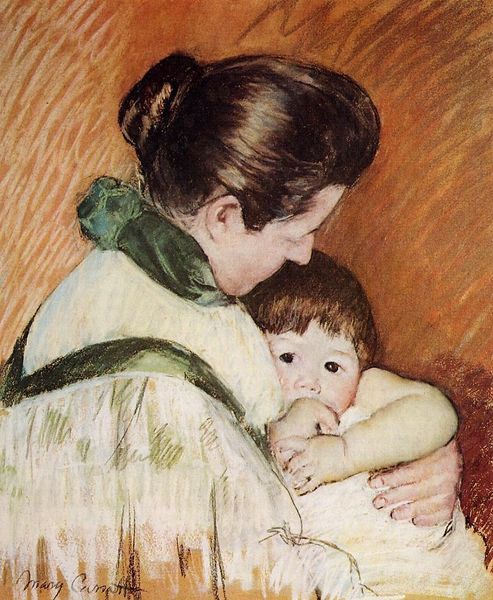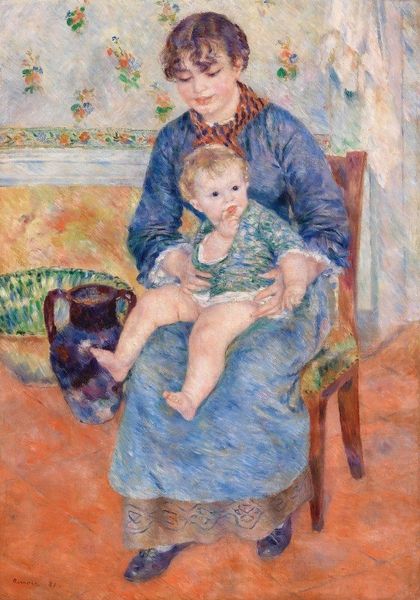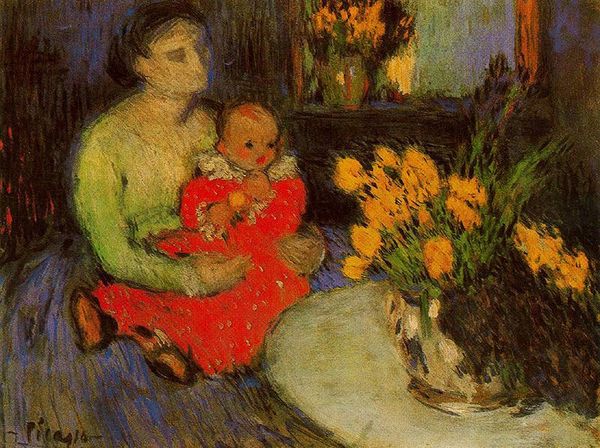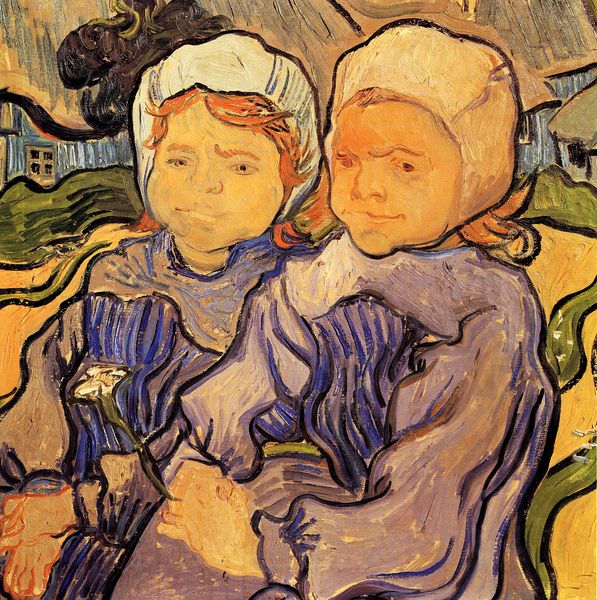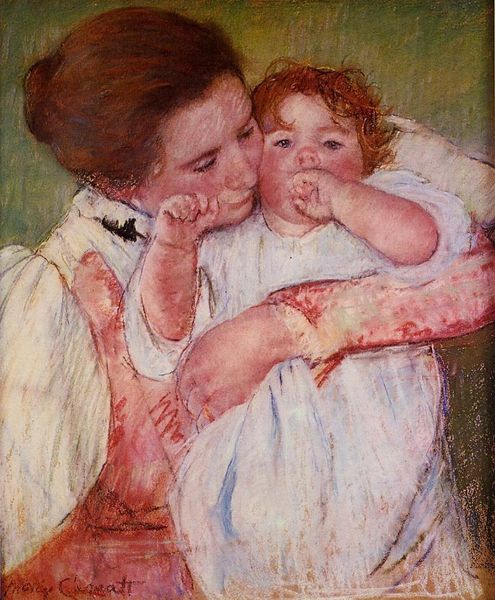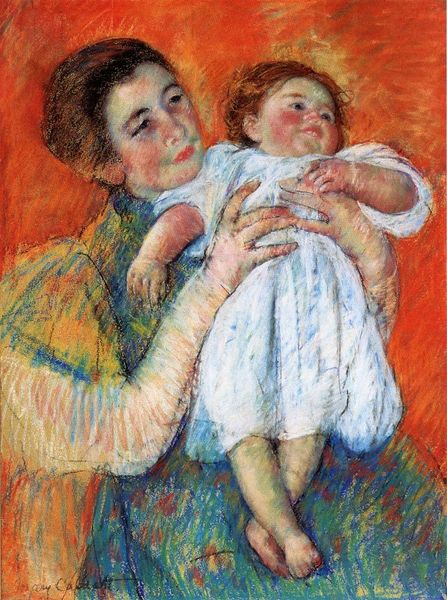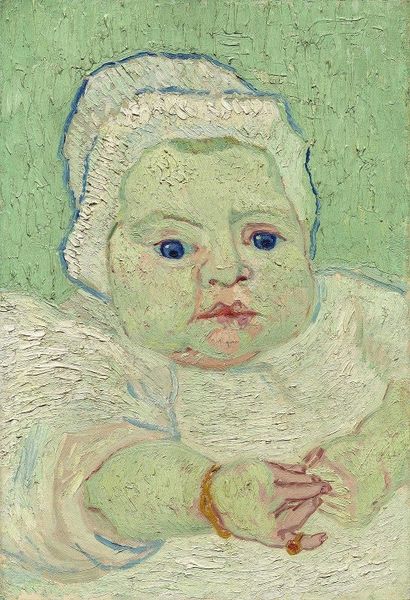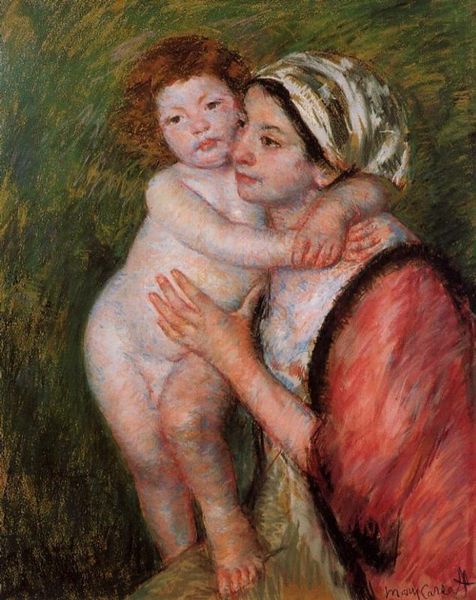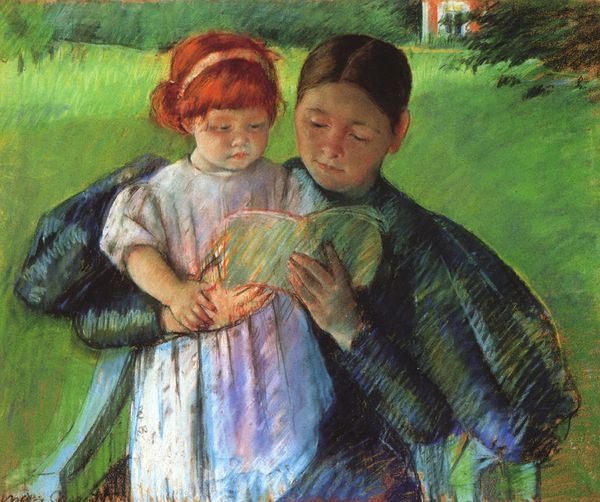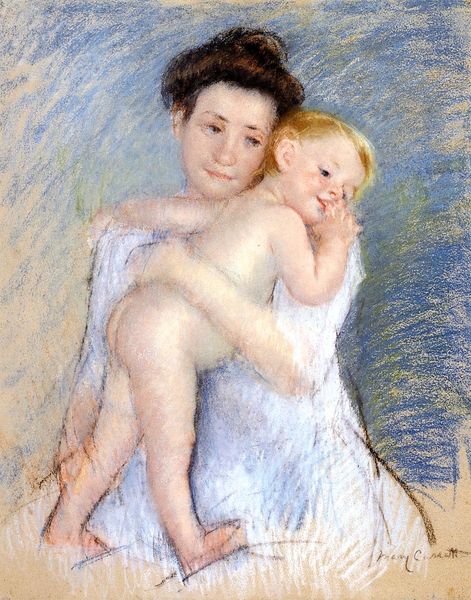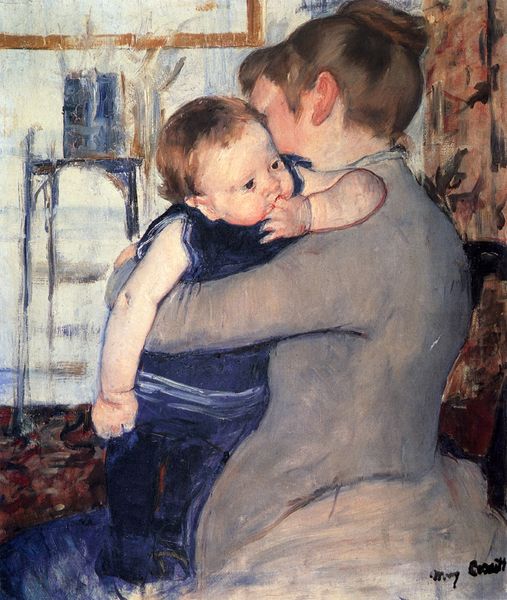
Mother Roulin with Her Baby 1888
0:00
0:00
vincentvangogh
Philadelphia Museum of Art, Philadelphia, PA, US
oil-paint, impasto
#
portrait
#
oil-paint
#
oil painting
#
impasto
#
genre-painting
#
post-impressionism
Dimensions: 73.5 x 92 cm
Copyright: Public domain
Vincent van Gogh painted "Mother Roulin with Her Baby" using oil on canvas. It portrays Augustine Roulin, the wife of a postman with whom Van Gogh had become friends in Arles, Southern France, and her baby Marcelle. Painted in the late 19th century, this work is a fascinating example of how domestic life became a subject for high art. During this period, the rise of the bourgeoisie and the evolving role of women in society led to a greater appreciation of domesticity. Van Gogh’s choice of subject matter reflects this social shift, elevating the everyday experiences of a working-class family to the realm of fine art. To fully appreciate this painting, we should consider the social and cultural context in which it was created. Researching 19th-century French society, the role of the family, and the art market, can deepen our appreciation of Van Gogh's work. Ultimately, art's meaning is contingent on its social and institutional context.
Comments
No comments
Be the first to comment and join the conversation on the ultimate creative platform.
